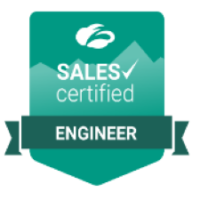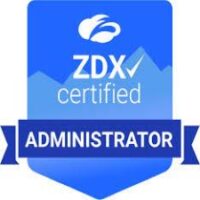Overview
In the rapidly evolving landscape of complex multicloud environments, safeguarding cloud infrastructure, sensitive data, and applications has become a paramount concern for organizations. With the proliferation of cloud-based applications and modern services, traditional security measures often fall short in addressing the unique challenges posed by multicloud environments.
Moreover, the rise in recent data breaches clearly indicates that data is a main target for bad actors and data security is a top concern of security teams. Getting a clear picture of where data lives and how it is stored, classified, and secured needs to be an essential part of an organization’s overall cloud security strategy.
To effectively secure multicloud environments and data residing in these environments, organizations need a comprehensive approach that delivers multiple layers of protection at scale.
This article explores the role of data security posture management (DSPM) and how its role differs from existing cloud security solutions that offer multi-layer security, such as cloud security posture management (CSPM) and SaaS security posture management (SSPM) to secure multicloud environments.
DSPM Overview
Data security posture management (DSPM) emerges as a pivotal component of a robust cloud security strategy, specifically tailored to safeguard sensitive data stored in the cloud.
DSPM transcends conventional security measures by delving into the depths of the cloud environment, proactively identifying and mitigating risks unique to data. Unlike traditional approaches that primarily focus on network and perimeter security, DSPM provides organizations with unparalleled visibility and control over their sensitive data. This enables prompt identification and remediation of risks, ensuring the preservation of data confidentiality, integrity, and availability.
Furthermore, DSPM plays a crucial role in ensuring compliance with stringent data protection regulations, such as the General Data Protection Regulation (GDPR) and the California Consumer Privacy Act (CCPA). By implementing DSPM, organizations demonstrate their commitment to data protection and compliance, mitigating the risk of substantial fines and reputational damage.
The Role of DSPM
DSPM complements many of the other solutions in an organization’s security technology stack, such as CSPM and SSPM. While these solutions focus on securing cloud infrastructure, configurations and SaaS applications, respectively, DSPM specifically addresses data protection. By using DSPM with these solutions, organizations can gain a holistic view of their sensitive data (structured and unstructured) in cloud environments, identify and mitigate data risks, and ensure compliance with regulatory requirements.
DSPM vs. CSPM vs. SSPM: How They Differ
DSPM, CSPM, and SSPM are all important cloud security solutions that can help organizations protect their cloud deployments, data, and applications. However, each solution has its own unique strengths and weaknesses. Understanding their strengths and limitations is crucial for organizations when devising their cloud security strategy. In this section, we will compare these three solutions and discuss how they can be used to create a comprehensive cloud security strategy.
DSPM
CSPM
SSPM
Objective
Data security posture management (DSPM) prioritizes data security, governance, and regulatory compliance independent of infrastructure
Cloud security posture management (CSPM) secures cloud infrastructure (identifying cloud vulnerabilities and misconfigurations)
SaaS security posture management (SSPM) secures SaaS data and applications by identifying risky misconfigurations and exposure
Security coverage
Secures structured, unstructured and shadow data irrespective of location
Secures the foundational infrastructure layers provided by cloud vendors
Secures the application layer, ensuring safe usage of SaaS platforms and reduces data exposure
Key capabilities
Data discovery and classification
Data access controls
Data risk analysis and remediation
Regulatory Compliance
Security posture monitoring
Misconfiguration remediation
Security policy enforcement
Compliance management
Continuous SaaS Posture monitoring
Configuration assessment
Remediation and response
Benefits
Prevents unauthorized access to, or leakage of sensitive data, thereby protecting sensitive data
Prevents misconfigurations and compliance violations that could lead to security breaches
Secures SaaS data, hardens SaaS cloud posture, governs risky app integrations, and manages identity risks
Focus
Data security for both on- and off-premises
Cloud configurations and compliance
SaaS activity monitoring, data protection, and configuration management
How DSPM and CSPM Differ
Cloud security posture management (CSPM) is a critical component of protecting cloud infrastructure. CSPM plays a crucial role in guaranteeing the security and proper configuration of cloud services. It provides visibility into cloud assets, helps detect misconfigurations, and ensures compliance with security standards. It helps businesses stay compliant with current regulations and regularly monitors the cloud environment to enable swift response to potential threats. Neglecting CSPM could result in misconfigurations, leaving openings for attackers to exploit weaknesses or undetected security threats that could give malicious individuals the opportunity to steal sensitive information.
DSPM focuses on securing the data that flows through cloud infrastructure. It helps organizations identify and protect sensitive data, detect and respond to data breaches, and comply with data protection regulations.
DSPM provides the visibility and control needed to secure sensitive data in the cloud, while CSPM ensures that the infrastructure is secure.
How DSPM and SSPM Differ
The main purpose of SSPM is to safeguard the use of applications by detecting potential hazards, such as data exposure or excessive permissions, and upholding SaaS security standards. It also plays a vital role in protecting identities, particularly as remote work becomes more prevalent. SSPM guarantees that only authorized individuals can access essential applications, and monitors their actions to prevent security breaches. In summary, SSPM offers the necessary supervision and authority for security teams to effectively secure SaaS environments, safeguarding important data and ensuring adherence to regulations.
DSPM solutions focus on data discovery and classification, whether it is stored in the cloud or elsewhere. DSPM solutions consistently monitor for potential data risks, and the most effective ones utilize AI technology to automate the process of identifying and classifying data, detecting possible risk, and implementing suitable protective measures.
Which One Do I Need?
When choosing a cloud security solution, it is important to consider the specific security needs of your organization. Some organizations may only need a basic level of cloud security, while others may need a more comprehensive solution from a sensitive data security perspective.
Using DSPM in conjunction with other security could help organizations build a comprehensive security posture that covers both cloud infrastructure and data protection, reducing your overall attack surface and significantly reducing the risk of a data breach or other security incident.
What Is the Risk of Not Having DSPM?
Without either of these in place, organizations can expose themselves to critical risks that could result in a cloud environment being compromised, or data being leaked.
Leaving CSPM or SSPM out of the equation could lead to misconfigurations, excessive entitlements, or vulnerabilities, allowing bad actors to exploit weaknesses and security threats to go undetected for a long time.
Without either of these crucial cloud security solutions or DSPM, you also run the risk of non-compliance with regulations like GDPR or HIPAA, which could lead to huge financial and reputational losses.
How Zscaler Can Help?
If you’re not sure which cloud security solution is right for you, then we encourage you to contact a Zscaler security expert. They can help you assess your organization’s security needs and recommend the best solution for you. You may also schedule a demo to see how DSPM can help you protect your data and your cloud environment while complementing your existing security stack.
How DSPM and SSPM Differ
The main purpose of SSPM is to safeguard the use of applications by detecting potential hazards, such as data exposure or excessive permissions, and upholding SaaS security standards. It also plays a vital role in protecting identities, particularly as remote work becomes more prevalent. SSPM guarantees that only authorized individuals can access essential applications, and monitors their actions to prevent security breaches. In summary, SSPM offers the necessary supervision and authority for security teams to effectively secure SaaS environments, safeguarding important data and ensuring adherence to regulations.
DSPM solutions focus on data discovery and classification, whether it is stored in the cloud or elsewhere. DSPM solutions consistently monitor for potential data risks, and the most effective ones utilize AI technology to automate the process of identifying and classifying data, detecting possible risk, and implementing suitable protective measures.
[[{“value”:”Overview
In the rapidly evolving landscape of complex multicloud environments, safeguarding cloud infrastructure, sensitive data, and applications has become a paramount concern for organizations. With the proliferation of cloud-based applications and modern services, traditional security measures often fall short in addressing the unique challenges posed by multicloud environments.
Moreover, the rise in recent data breaches clearly indicates that data is a main target for bad actors and data security is a top concern of security teams. Getting a clear picture of where data lives and how it is stored, classified, and secured needs to be an essential part of an organization’s overall cloud security strategy.
To effectively secure multicloud environments and data residing in these environments, organizations need a comprehensive approach that delivers multiple layers of protection at scale.
This article explores the role of data security posture management (DSPM) and how its role differs from existing cloud security solutions that offer multi-layer security, such as cloud security posture management (CSPM) and SaaS security posture management (SSPM) to secure multicloud environments.
DSPM Overview
Data security posture management (DSPM) emerges as a pivotal component of a robust cloud security strategy, specifically tailored to safeguard sensitive data stored in the cloud.
DSPM transcends conventional security measures by delving into the depths of the cloud environment, proactively identifying and mitigating risks unique to data. Unlike traditional approaches that primarily focus on network and perimeter security, DSPM provides organizations with unparalleled visibility and control over their sensitive data. This enables prompt identification and remediation of risks, ensuring the preservation of data confidentiality, integrity, and availability.
Furthermore, DSPM plays a crucial role in ensuring compliance with stringent data protection regulations, such as the General Data Protection Regulation (GDPR) and the California Consumer Privacy Act (CCPA). By implementing DSPM, organizations demonstrate their commitment to data protection and compliance, mitigating the risk of substantial fines and reputational damage.
The Role of DSPM
DSPM complements many of the other solutions in an organization’s security technology stack, such as CSPM and SSPM. While these solutions focus on securing cloud infrastructure, configurations and SaaS applications, respectively, DSPM specifically addresses data protection. By using DSPM with these solutions, organizations can gain a holistic view of their sensitive data (structured and unstructured) in cloud environments, identify and mitigate data risks, and ensure compliance with regulatory requirements.
DSPM vs. CSPM vs. SSPM: How They Differ
DSPM, CSPM, and SSPM are all important cloud security solutions that can help organizations protect their cloud deployments, data, and applications. However, each solution has its own unique strengths and weaknesses. Understanding their strengths and limitations is crucial for organizations when devising their cloud security strategy. In this section, we will compare these three solutions and discuss how they can be used to create a comprehensive cloud security strategy.
DSPM
CSPM
SSPM
Objective
Data security posture management (DSPM) prioritizes data security, governance, and regulatory compliance independent of infrastructure
Cloud security posture management (CSPM) secures cloud infrastructure (identifying cloud vulnerabilities and misconfigurations)
SaaS security posture management (SSPM) secures SaaS data and applications by identifying risky misconfigurations and exposure
Security coverage
Secures structured, unstructured and shadow data irrespective of location
Secures the foundational infrastructure layers provided by cloud vendors
Secures the application layer, ensuring safe usage of SaaS platforms and reduces data exposure
Key capabilities
Data discovery and classification
Data access controls
Data risk analysis and remediation
Regulatory Compliance
Security posture monitoring
Misconfiguration remediation
Security policy enforcement
Compliance management
Continuous SaaS Posture monitoring
Configuration assessment
Remediation and response
Benefits
Prevents unauthorized access to, or leakage of sensitive data, thereby protecting sensitive data
Prevents misconfigurations and compliance violations that could lead to security breaches
Secures SaaS data, hardens SaaS cloud posture, governs risky app integrations, and manages identity risks
Focus
Data security for both on- and off-premises
Cloud configurations and compliance
SaaS activity monitoring, data protection, and configuration management
How DSPM and CSPM Differ
Cloud security posture management (CSPM) is a critical component of protecting cloud infrastructure. CSPM plays a crucial role in guaranteeing the security and proper configuration of cloud services. It provides visibility into cloud assets, helps detect misconfigurations, and ensures compliance with security standards. It helps businesses stay compliant with current regulations and regularly monitors the cloud environment to enable swift response to potential threats. Neglecting CSPM could result in misconfigurations, leaving openings for attackers to exploit weaknesses or undetected security threats that could give malicious individuals the opportunity to steal sensitive information.
DSPM focuses on securing the data that flows through cloud infrastructure. It helps organizations identify and protect sensitive data, detect and respond to data breaches, and comply with data protection regulations.
DSPM provides the visibility and control needed to secure sensitive data in the cloud, while CSPM ensures that the infrastructure is secure.
How DSPM and SSPM Differ
The main purpose of SSPM is to safeguard the use of applications by detecting potential hazards, such as data exposure or excessive permissions, and upholding SaaS security standards. It also plays a vital role in protecting identities, particularly as remote work becomes more prevalent. SSPM guarantees that only authorized individuals can access essential applications, and monitors their actions to prevent security breaches. In summary, SSPM offers the necessary supervision and authority for security teams to effectively secure SaaS environments, safeguarding important data and ensuring adherence to regulations.
DSPM solutions focus on data discovery and classification, whether it is stored in the cloud or elsewhere. DSPM solutions consistently monitor for potential data risks, and the most effective ones utilize AI technology to automate the process of identifying and classifying data, detecting possible risk, and implementing suitable protective measures.
Which One Do I Need?
When choosing a cloud security solution, it is important to consider the specific security needs of your organization. Some organizations may only need a basic level of cloud security, while others may need a more comprehensive solution from a sensitive data security perspective.
Using DSPM in conjunction with other security could help organizations build a comprehensive security posture that covers both cloud infrastructure and data protection, reducing your overall attack surface and significantly reducing the risk of a data breach or other security incident.
What Is the Risk of Not Having DSPM?
Without either of these in place, organizations can expose themselves to critical risks that could result in a cloud environment being compromised, or data being leaked.
Leaving CSPM or SSPM out of the equation could lead to misconfigurations, excessive entitlements, or vulnerabilities, allowing bad actors to exploit weaknesses and security threats to go undetected for a long time.
Without either of these crucial cloud security solutions or DSPM, you also run the risk of non-compliance with regulations like GDPR or HIPAA, which could lead to huge financial and reputational losses.
How Zscaler Can Help?
If you’re not sure which cloud security solution is right for you, then we encourage you to contact a Zscaler security expert. They can help you assess your organization’s security needs and recommend the best solution for you. You may also schedule a demo to see how DSPM can help you protect your data and your cloud environment while complementing your existing security stack.”}]]











